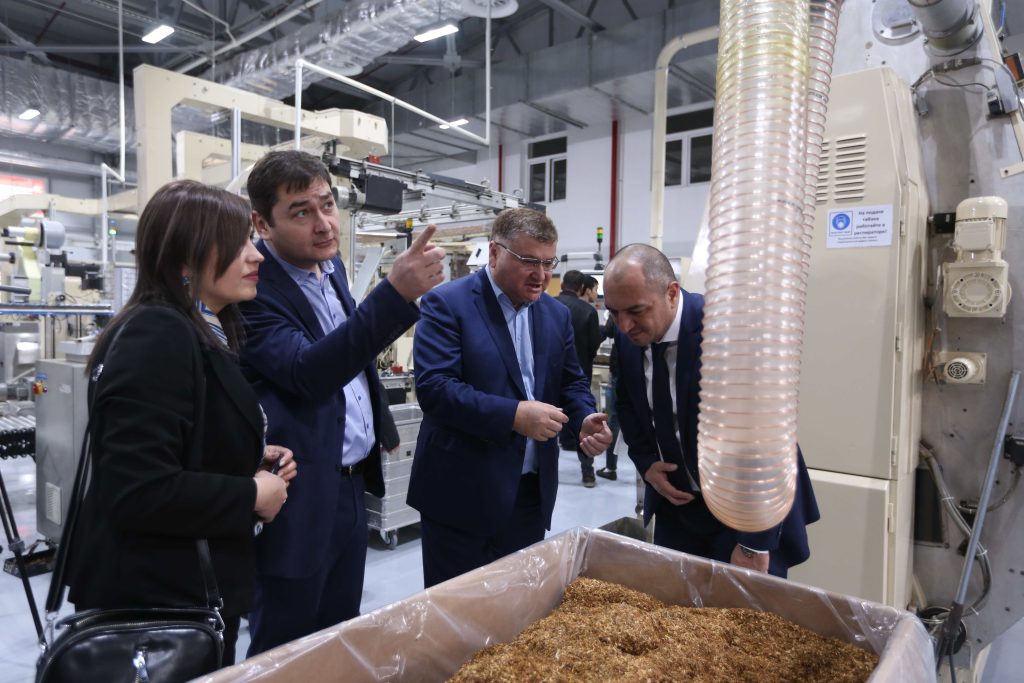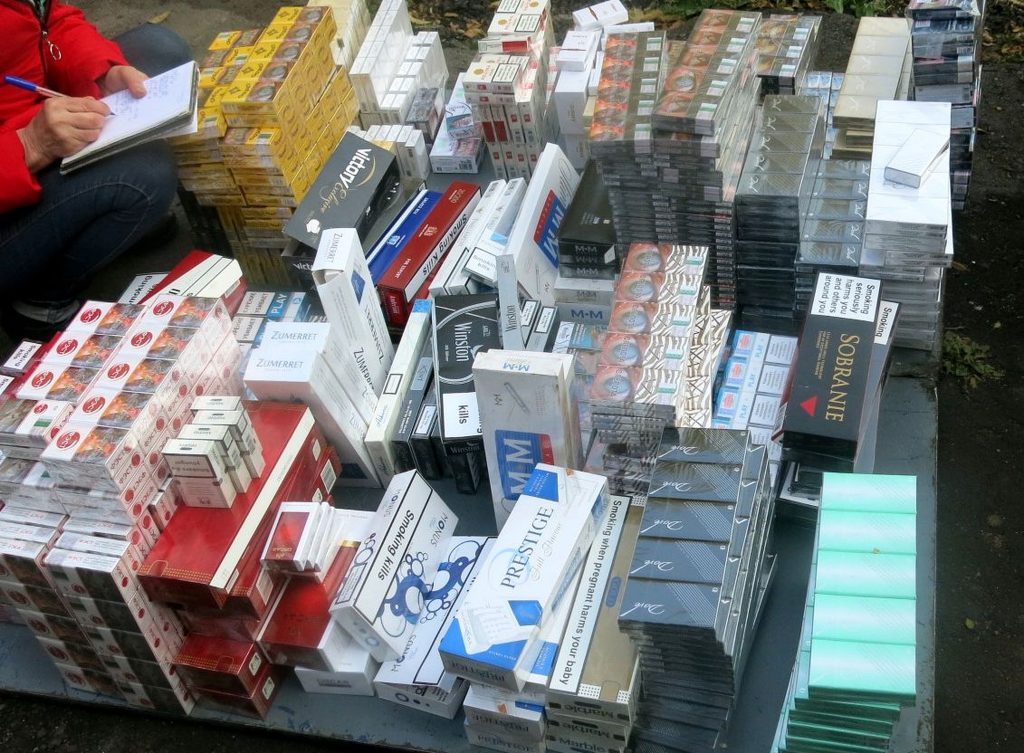Stranglehold
- Also in TR Illicit Trade Print Edition
- August 1, 2023
- 0
- 9 minutes read

Photos courtesy of Vladislav Vorotnikov

The illicit cigarette trade remains a big problem in Central Asia.
By Vladislav Vorotnikov
Last year, cigarette production perked up in Central Asia, a part of post-Soviet space comprising Kazakhstan, Uzbekistan, Kyrgyzstan, Turkmenistan and Tajikistan. The positive production dynamics were registered despite mounting regulatory pressure and flourishing illegal trade.
Kazakhstan, the largest cigarette market in the region, saw a 7.9 percent rise in the tobacco industry’s output to 17.4 billion items in 2022, the National Statistical Bureau estimated. This is the strongest increase in the past decade, following a three-year decline.
Last year, the average household spent KZT44,800 ($101) on tobacco, up 10.8 percent compared with the previous year. This is primarily associated with a steady rise in tariffs, as Kazakhstan has been gradually raising the excise rate and the minimum prices per pack since 2021—a process slated to end in 2024. Against this background, the average price of cigarettes in Kazakhstan jumped by 17.9 percent in May 2023 compared with the previous year.
Some lawmakers were troubled by the trend. “Of course, tobacco is not bread, and it doesn’t belong to the list of essential products. However, there is a certain percentage of our citizens for whom it is also necessary,” said Sergey Ershov, a member of Kazakhstan’s parliament. “And in a situation where the prices for a pack of cigarettes are growing, and the incomes of the population remain at the same level, a further increase in the cost can lead to a significant increase share of illegal trade, inevitably spurring the consumption of cheap counterfeit products of dubious quality.”
The government is boasting of a 10.1 percent drop in domestic tobacco consumption to 3.7 billion units in the first quarter of 2023 compared with the 4.1 billion units during the same period of the previous year, though there are doubts whether these figures actually reflect the state of play in a market where the share of illegal trade reportedly is surging.
Currently, Kazakhstan’s cigarette market is dominated by Philip Morris Kazakhstan, which runs a factory in the Almaty region it acquired in 1993, and Japan Tobacco International Kazakhstan, which operates a factory in the same region. The sole local manufacturer, Phoenix Enterprises, which sells cigarettes under the Dryuzba brand, accounts for a small share of the budget segment of the market. In addition, nearly a quarter of demand on the Kazakhstan tobacco market is met by importers, including BAT Kazakhstan, KT&G and Donskoy Tobacco.
Uzbekistan has an estimated consumption of around 10 billion cigarettes per year, worth $500 million, according to Igor Nikolsky, JTI regional director.
In the past few years, Uzbekistan reportedly saw a substantial rise in cigarette production. Currently, the industry comprises the Tashkent Tobacco factory, manufacturing JTI brands, and the UzBat factory, operated by BAT Uzbekistan. The local press reported that these two factories ramped up production to a level allowing the country to nearly reach self-sufficiency.
In 2018, the Uzbek government abandoned a decade-long ban on cigarette exports from the country, allowing local factories to sell to Mongolia, Kazakhstan, Afghanistan and other countries.

The Wild West
The level of government control over the tobacco market varies across Central Asia. In Kazakhstan, it is relatively strict while in some other countries, such as Kyrgyzstan, it leaves a lot to be desired.
In 2021, the Kazakh government estimated that the share of illegal trade on the domestic market was close to 1.6 percent. Market players have doubts about whether this figure is correct, however. JTI Kazakhstan, for instance, put this rate at 3 percent to 5 percent, which is in line with the estimation of the Association of Trade Enterprises. Moreover, the steady rise in excise tariffs will likely drive this figure up by 1 percent to 2 percent per year, according to Alyona Stepanishina, external communication manager of JTI Kazakhstan.
Over the past two years, the share of illegal tobacco products in Uzbekistan jumped from 4 percent to 15 percent, Komil Abdurakhmonov, a spokesperson for the Agency for Regulation of Alcohol and Tobacco Market, estimated.
The lion’s share of illegal tobacco in the market comes from smuggling and flows into the country through the southern regions, Abdurakhmonov claimed. Commonly smuggled brands include Milano from the United Arab Emirates and KT&G’s Esse, he said. The cigarettes are first delivered to Kirgizstan and Tajikistan to be further smuggled to Uzbekistan.
“A series of recent studies showed that in all stores and the markets, we have Milano cigarettes, coming from Dubai. Their price is much lower than that of the local brands, and many consumers smoke them because of the price,” Abdurakhmonov said, adding that there are also substantial concerns over the quality of these products. “Simply checking information on the label, we can see that the level of nicotine content in these cigarettes by several times exceeds the allowed levels,” he added.
Ulugbek Kasimov, a spokesperson for the Uzbekistan State Customs Committee, also blamed Kyrgyzstan for illegally exporting tobacco products to his country. He disclosed that a large part of the shipments goes through the porous southern border. In this case, the customs service is nearly powerless to pull the plug on smuggling.
This is not the first time Kyrgyzstan has been blamed for large-scale cigarette smuggling in the region. The country shares a common customs space with Kazakhstan within the Eurasia Economic Union and is believed to be reexporting cheap cigarettes to several neighboring countries. In 2019, consulting firm KPMG reported that nearly a third of cigarettes entering Kyrgyzstan are reexported to other parts of Central Asia and Russia, often through various smuggling channels.
Azamat Arapbaev, a member of the Kirgiz Parliament, said that a large share of illegal cigarettes entering the country come from the Middle East, Tajikistan and Serbia while some cigarettes make their way to the market from duty-free stores on the border. He estimated that these supplies have a big impact on the domestic cigarette market, where sales are close to 3.2 billion units per year.
A 2022 study conducted by the think tank IPSOS showed that the share of illegal cigarettes on the domestic market of Kirgizstan is close to 9.5 percent. Kamila Aikultlova, an analyst with IPSOS, estimated that the national budget lost between $6 million and $7 million from illegal trade on the domestic market. Meanwhile, in Tajikistan, illicit cigarettes accounted for a whopping 74.2 percent of retail sales in 2021, according to Nielsen.
The future of the Kazakhstan tobacco market is tightly linked with a proposal, published by the healthcare ministry in early 2023, to ban vapes. Alibek Kuantirov, the economy minister, backed the initiative, claiming that the Kazakhstan society favored this idea. He promised that tobacco-heating devices would not be banned. Still, Olga Krutova, an analyst with local publication MK, assumed that the restrictions in this field would give further impetus to the growth of the illegal tobacco market.

An Island of Deficit
Things on the cigarette market look different in Turkmenistan, one of the poorest countries in the post-Soviet space, where smokers struggle to find affordable cigarettes. In 2016, the government imposed a ban on selling cigarettes in private stores, restricting the trade to state stores. Turkmenistan aims to become the world’s first tobacco-free country by 2025, though not everyone is happy with that goal.
News outlets report that people must wait in queues stretching for hundreds of meters for a rare opportunity to buy cheap cigarettes for TMT50 ($14) to TMT60. In 2021, the release of a long-awaited cigarette brand provoked stampedes, fights and detentions in several regions.
“A huge number of people gathered in front of the store in the Zheleznodorozhnik microdistrict of Turkmenabad, and even the police could not keep order,” said one of the customers who described those events to the foreign press. “Two people in line got sick. In the pandemonium, several shop windows were smashed. The store started dispensing cigarettes at 7 a.m., and people were standing in line 10 [hours to] 12 hours before that.”
Turkmenistan remains a closed country even by the standards of authoritarian Central Asia, so there are no reliable statistics pertaining to actual cigarette consumption. Occasional reports describe cases of smuggling and the existence of various underground cigarette workshops. Some citizens try to grow tobacco on their land plots for personal consumption, though frown on the practice.